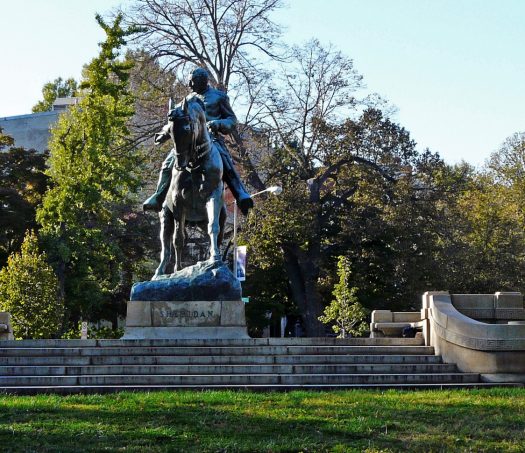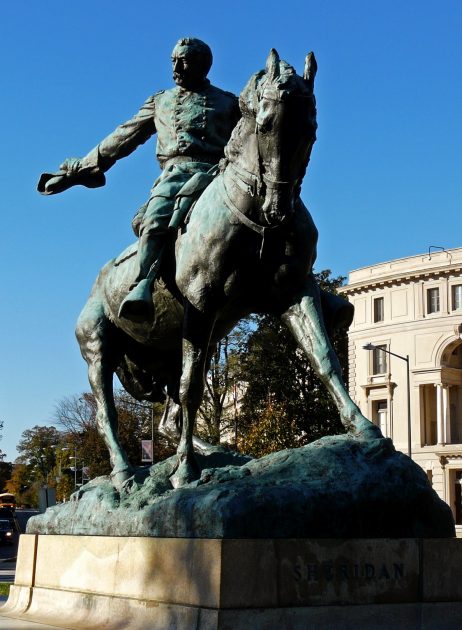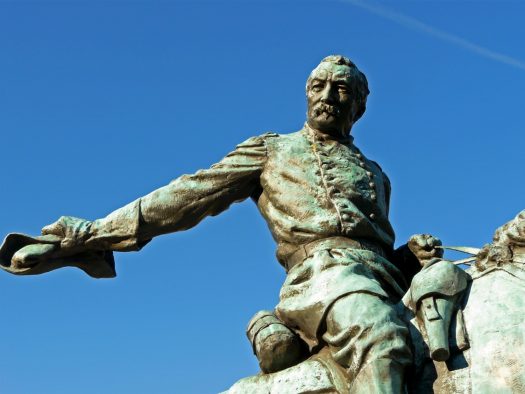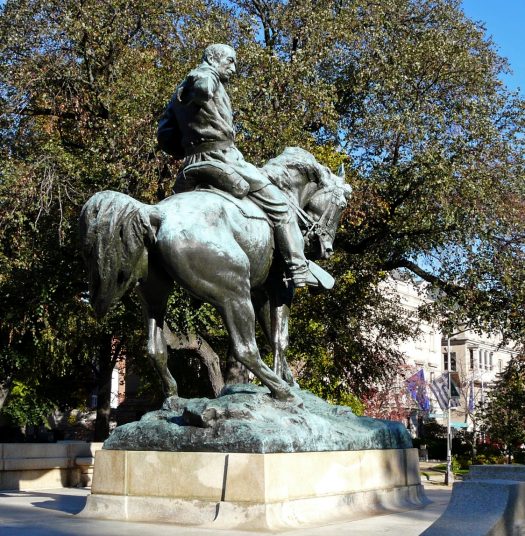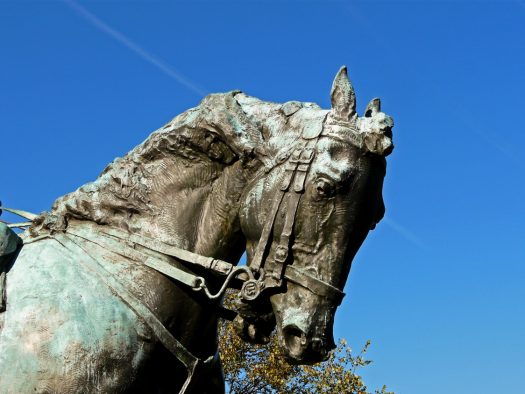Home | Sheridan, Philip H.
- CountryUS
- Town:Washington D.C.
-
Year of creation:1908
- Rider(s):Sheridan, Philip H.
(1831–1888) defeated Confederate forces in the Shenandoah Valley. His destruction of the economic infrastructure of the Valley, called ‘The Burning’ by residents, was one of the first uses of scorched-earth tactics in the war. Fully grown, he reached only 1.65 metres tall, a stature that led to the nickname, ‘Little Phil’. Abraham Lincoln described his appearance in a popular anecdote: ‘A brown, chunky little chap, with a long body, short legs, not enough neck to hang him, and such long arms that if his ankles itch he can scratch them without stooping’. In 1865, his cavalry was instrumental in forcing the surrender of Lee at Appomattox.
- Sculptor(s):Borglum, Gutzon
(1867 –1941) was a Danish-American born artist and sculptor famous for creating the monumental presidents’ heads at Mount Rushmore, South Dakota, the famous carving on Stone Mountain near Atlanta, as well as other public works of art. In 1908, Borglum won a competition for a statue of the Civil War General Philip Sheridan to be placed in Sheridan Circle in Washington. D.C. A second version was erected in Chicago, Illinois, in 1923.
-
Most equestrian statues in Washington are atop pedestals, forcing viewers to gaze at the underbelly, but the statue of Sheridan is set low to the ground. Sheridan looks the viewer right in the eye. Borglum, the sculptor of the work, captured the moment that Sheridan rallied his men after his famous ‘Sheridan’s Ride’.
